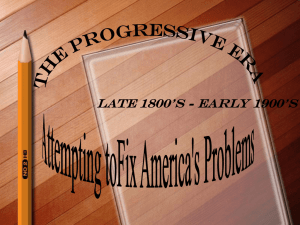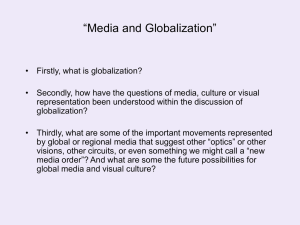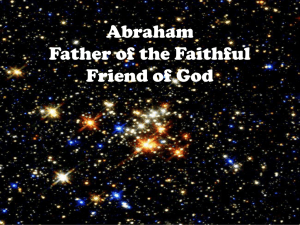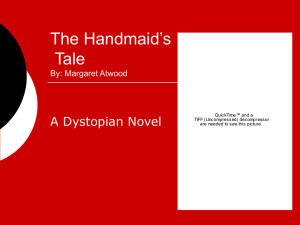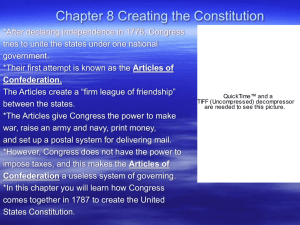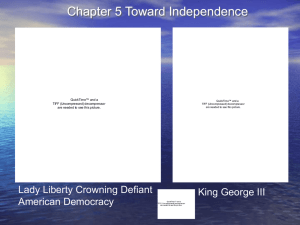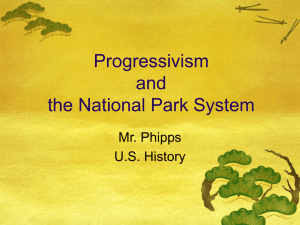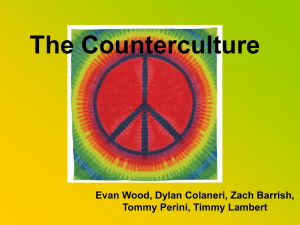Baroque and Rococo
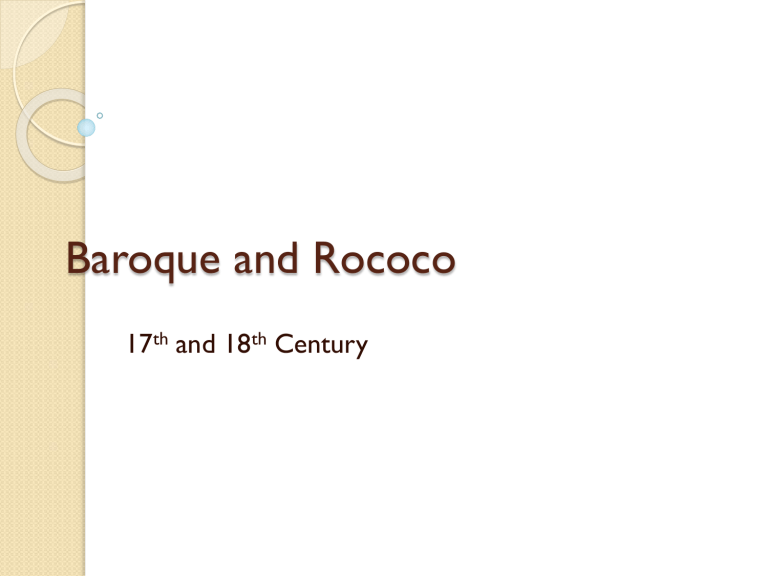
Baroque and Rococo
17 th and 18 th Century
Baroque
The term Baroque once had a negative meaning.
The name is derived from Baroque pearls
◦ pearls with unusual, odd shapes
Compared to Renaissance art, it was considered to be
◦ “over-dramatic”
◦ The architecture, “overly decorated”.
Baroque Pearl
QuickTime™ and a
TIFF (Uncompressed) decompressor are needed to see this picture.
Baroque Style
Baroque style is Dramatic
Strong Contrast of Light and Dark
Dynamic Composition
Architecture is decorative / many details
Roman Catholic Church supported Baroque art style in response to the Protestant Reformation (movement to reform Catholic Church)
◦ communication of religious themes with viewer's direct and emotional involvement
Aristocracy adopted Baroque style
◦ to impress visitors and to express triumphant power and control
Baroque Style spread throughout Europe
◦
Italy, Holland, France, Spain, and England.
Baroque Art – 1600-1750
Catholic Countries : Italy, Flanders
(Flemish),
Spain,
France
Common Traits that reflect the values of the time:
Gigantic religious works to display their faith’s triumph and to over-whelm and attract new worshippers.
-Massive displays of wealth by absolute monarchs to enchant and impress visitors.
Baroque Art – 1600-1750
Catholic Countries : Italy, Flanders
(Flemish),
Spain,
France
What to look for:
-Use of light – harsh light from single source to concentrate your eye (chiaroscuro but for focal point…).
-Saints and miracles looking like ordinary people and events
Baroque Art – 1600-1750
Catholic Countries : Italy, Flanders
(Flemish),
Spain,
France
What to look for:
-Use of light – harsh light from single source to concentrate your eye (chiaroscuro but for focal point…).
-Saints and miracles looking like ordinary people and events
-dynamic explosion of energy – images captured at height of action
-VERY voluptuous female nudes
-portraits – posed to show refinement but looked “real”
-huge clouds in landscapes
Baroque Art – 1600-1750
Two distinct “schools” of Baroque Art:
1. Catholic Countries : Italy, Flanders
(Flemish or
Austrian/Spanish Netherlands),
Spain, France
2. Protestant Countries : England & Holland
(Dutch)
Italian
Baroque
QuickTime™ and a
TIFF (Uncompressed) decompressor are needed to see this picture.
Annibale Carracci , Loves of the Gods , 1597 – 1601, Ceiling Fresco
Commissioned by
Cardinal Farnese to celebrate the wedding of his brother
Various Gods and
Humans in love“quadro riportato” – looks like framed easel paintings
Inspired by Italian
Renaissance art
(Michelangelo, Raphael,
Titian)
QuickTime™ and a
TIFF (Uncompressed) decompressor are needed to see this picture.
Annibale Carracci , Loves of the Gods
QuickTime™ and a
TIFF (U ncompressed) decompressor are needed to see this picture.
Comparison
QuickTime™ and a
TIFF (Uncompressed) decompressor are needed to see this picture.
Baroque fresco
QuickTime™ and a
TIFF (Uncompressed) decompressor are needed to see this picture.
Renaissance fresco
QuickTime™ and a
TIFF (Uncompressed) decompressor are needed to see this picture.
Caravaggio , Conversion of St. Paul , 1601, Oil on Canvas
QuickTime™ and a
TIFF (Uncompressed) decompressor are needed to see this picture.
Story of Pharisee Saul converting to
Christianity
Appears to be an accident in the horse stable
(everyday life)
Caravaggio used strong light and dark / shadowy style (greatly influenced
European art)
Perspective and
Chiaroscuro (light and shadow) used to bring the viewer closer to the event
QuickTime™ and a
TIFF (Uncompressed) decompressor are needed to see this picture.
Caravaggio , Calling of St. Matthew , 1597 – 1601, Oil on Canvas
Christ enters from the right to summon Levi
(a Roman tax collector) to a “higher calling”
Bland street scene
(“normal, everyday life”)
Caravaggio’s style of strong light and shadowLight as a symbol of God
QuickTime™ and a
TIFF (Uncompressed) decompressor are needed to see this picture.
Comparison
QuickTime™ and a
TIFF (Uncompressed) decompressor are needed to see this picture.
QuickTime™ and a
TIFF (Uncompressed) decompressor are needed to see this picture.
Caravaggio, Crucifixion of St. Peter
Caravaggio, Judith Slaying Holofernes
Artemisia Gentileschi
Judith Slaying Holofernes
QuickTime™ and a
TIFF (Uncompressed) decompressor are needed to see this picture.
Gianlorenzo Bernini , Baldacchino , 1624 – 1633, Gilded Bronze
QuickTime™ and a
TIFF (Uncompressed) decompressor are needed to see this picture.
Bronze “canopy” over the tomb of St. Peter
Focal point of church
Made from Bronze of doors of the ancient
Roman Pantheon
(Pantheon was a temple for Pagan religion)
Commissioned by the
Barberini Family
Bernini
•Expressive
•Dynamic
•Energetic
David
David
QuickTime™ and a
TIFF (Uncompressed) decompressor are needed to see this picture.
St. Peter's, Rome exterior – late Renaissance
(Completed 1690) designed in part by Michelangelo
Largest interior of any Catholic Church in world – holds up to 60, 000 people
QuickTime™ and a
TIFF (Uncompressed) decompressor are needed to see this picture.
QuickTime™ and a
TIFF (Uncompressed) decompressor are needed to see this picture.
Ancient Roman Pantheon, 125 – 28 CE
Bernini
Italian
The Ecstasy of St.
Theresa
Bernini
Italian
Baldachin of St. Peter’s Cathedral
This supreme example of Baroque art was the first masterpiece that the twenty-six year old genius, Gianlorenzo Bernini made for St. Peter's Basilica. It is impossible not to admire this fantastic, sumptuous bronze canopy supported by four spiral columns, richly decorated with gold, as it majestically rises upward. It is the largest known bronze artwork. He sent most of his life working on St. Peter’s Cathedral
Pietro da Corton, The Triumph of Divine Providence
Spanish
Baroque
QuickTime™ and a
TIFF (Uncompressed) decompressor are needed to see this picture.
Diego Valazquez , Las Meninas (The Maids of Honor),1656
QuickTime™ and a
TIFF (Uncompressed) decompressor are needed to see this picture.
Informal family portrait
Theme “Mystery of the Visual
World”
Young Princess in middle
“Infantata”
Maids in waiting helping her
Her favorite dwarfs and her dog
Valasquez is working on large canvas (portrait of King Philip IV and Queen Mariana (reflections in mirror)
Man framed in doorway
Diego Valazquez , Surrender of Breda , 1634 – 1635,
Made for King Philip IV
Spanish Victory over
Dutch in 1625
Spanish troops on right
(organized - victory)
Dutch troops on left
(disorganized – defeat)
Spanish General patting the back of Dutch General
QuickTime™ and a
TIFF (Uncompressed) decompressor are needed to see this picture.
QuickTime™ and a
TIFF (Uncompressed) decompressor are needed to see this picture.
Francisco de Zurbaran , Saint Serpion , 1628,
QuickTime™ and a
TIFF (Uncompressed) decompressor are needed to see this picture.
St. Serpion (Martyr)
– tied to a tree and tortured (devotion to religion)
St. Serpion - monk born in
England -
◦ “commoner”
De Zurbaran inspired by
Caravaggio’s light and shadow
Figure fills the foreground
(close to viewer)
Dutch
Baroque
Baroque Art – 1600-1750
Protestant Countries : Holland
(Dutch)
& England
Common Traits that reflect the values of the time:
-Still lifes
-Landscapes
-Portraits
-Very little to no religious imagery
Independence from Spain
Trade and Banking = Patrons of Art
Protestant rejected religious art, traded for portraits, genre scenes, and landscapes
QuickTime™ and a
TIFF (Uncompressed) decompressor are needed to see this picture.
Created when he was a student
Exercise in lighting, expression
Rembrandt created at least 70 self-portraits during his lifetime (oil paintings and etchings)
Rembrandt van Rijn
Self-Portrait in a Cap,
Etching, 1630
Rembrant Self-Portraits
QuickTime™ and a
TIFF (U ncompressed) decompressor are needed to see this pi cture.
QuickTi me™ and a
TIFF (Uncompressed) decompressor are needed to see this picture.
QuickTime™ and a
TIFF (U ncompressed) decompressor are needed to see this pi cture.
QuickTime™ and a
TIFF (Uncompressed) decompressor are needed to see this picture.
Rembrandt van Rijn , Return of the Prodigal Son ,
1665,
Stillness / inward contemplation (less dramatic than Italian
Baroque paintings)
Humility and humanity of Christ
Father and Son relationship (father forgiving Christ)
Light mixed with shadow
Light focused on father and son
QuickTime™ and a
TIFF (Uncompressed) decompressor are needed to see this picture.
Rembrant, Anatomy Lesson of Dr. Tulp
QuickTime™ and a
TIFF (Uncompressed) decompressor are needed to see this picture.
Frans Hals , The Women of the Regents of the Old
Men’s Home at Haarlem , 1664
Somber and Serious
Very orderly composition
Monochromatic Color
Palette (black and white and gray)
Women look out of painting (2 look at viewer)
QuickTime™ and a
TIFF (Uncompressed) decompressor are needed to see this picture.
Vermeer
Dutch
The Geographer
French
Baroque
QuickTime™ and a
TIFF (Uncompressed) decompressor are needed to see this picture.
Louis XIV expanded the
Louve and extended expenses for the building and completion of versailles
Hyancinthe Rigaud , Louis XIV , 1701,
QuickTime™ and a
TIFF (Uncompressed) decompressor are needed to see this picture.
King Louis XIV
Grandiose
Absolute Monarchy
Wore high heels to make him taller (5’4”)
QuickTime™ and a
TIFF (Uncompressed) decompressor are needed to see this picture.
Jules Hardouin-Mansart and Charles Le Brun , Hall of Mirrors (Palace of Versailles), 1680, interior architecture
Hall of Mirrors in
King Louis XIV’s
Palace of Versailles
Mirror – Baroque source of illusion
100’s of rooms in palace
Rich decoration / details
QuickTime™ and a
TIFF (Uncompressed) decompressor are needed to see this picture.
Rococo
Rococo
Means pebble, or shell
Refined, fanciful, playful style fashionable in France due to Louis XIV’s pampered lifestyle.
1700-1789
Scenes showed the luxuries and leisurely pursuits of aristocrats and the wealthy
More decorative and non-functional then Baroque
Rococo Style
Pastel colors
Delicately curving forms
Dainty figures,
Light hearted
Sensual and erotic
Jean Baptiste Simeon, Boy Blowing Soap Bubbles
Antoine Watteau, L’Indifferent
Anotine Watteau, Return from Cythera
Francois Boucher, Cupid a Captive
Jean-Onore Fragonard, The Swing
William Hogarth, Breakfast Scene, from Marriage a la Mode
Jean Honore Fragonard, The Secret Meeting
Jean Honore Fragonard ,The Lover Crowned
Jean Honore Fragonard , The Bathers
Jean Honore Fragonard , Marquise de Pompadour
• Compare and Contrast each “David”.
• Discuss the Artist, Time Period, and Materials used
• Discuss what style characteristics are evident in each piece and how does it compare to the others?
• Discuss the theme and situation that the statue portrays. How
Does it fit in the time period?
David
Compare and Contrast
Compare the artwork of Baroque and Rococo.
What characteristics of style did they have in common? In contrast?
What were the themes of Baroque? Of Rococo?
What was going on in society when Baroque was popular?
What was going on in society during the
Rococo period?

